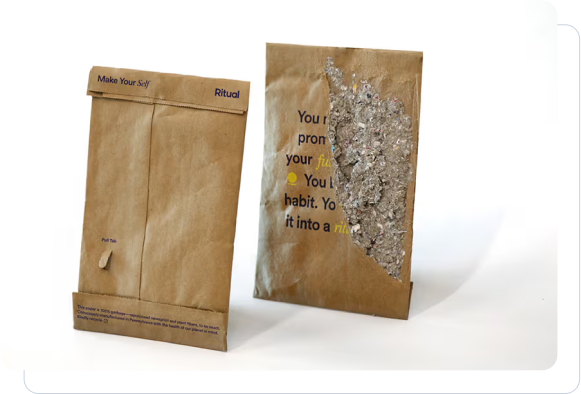The global rise in concerns about sustainability has triggered a huge change in how companies around the globe approach packaging. Right from the food industry to electronics, companies are in search of methods that would allow them to decrease their carbon footprint while at the same time satisfying consumers’ needs. One of the areas that have experienced a lot of change is this area of packaging. However, flexible packaging has risen to the challenge as a leader in innovation towards sustainability in packaging. Some of the benefits include, cutting out waste, minimising carbon emissions, and promoting the circular economy.
This blog post will analyze the role of flexible packaging, its benefits for sustainability, and advancements that make it a desirable option for companies. At the end of this article, you will be able to comprehend why flexible packaging is crucial in the process of making the world go green.
What is Flexible Packaging?
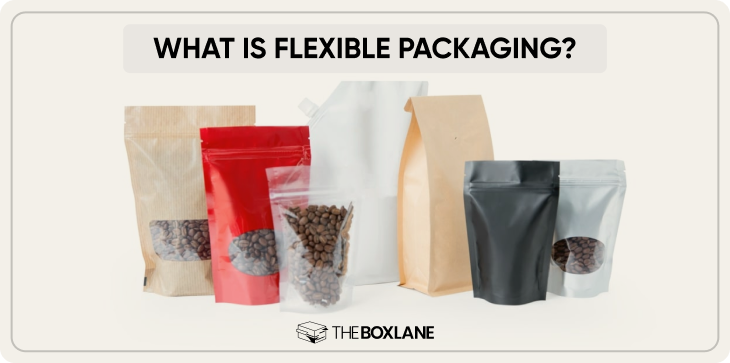
This is a packaging type that can be bent, folded or compressed without reaching a state of failure. This packaging is usually made from one or more of the following: Plastic films, aluminum foils, paper-based products and more recent developments include biodegradable films. Flexible packaging is generally lighter in weight as well as possesses special characteristics that can easily fit any product or sector.
Such type of packaging is gaining increased popularity due to the possibility of its use for minimizing waste and negative impact on the environment. Flexible packaging differs from rigid packaging like glass jars or metal cans; it is often created with the idea to use fewer resources and is considered to be an environmentally friendly solution for packing numerous kinds of products including food and beverages, as well as personal care products.
Flexible packaging also has the potential to contribute towards waste minimization and also energy consumption reduction during packaging and transportation. It is a perfect fit for organizations that want to reduce their emissions and meet the current customer demands for green products.
Understanding Flexible Packaging
Types of Flexible Packaging Materials
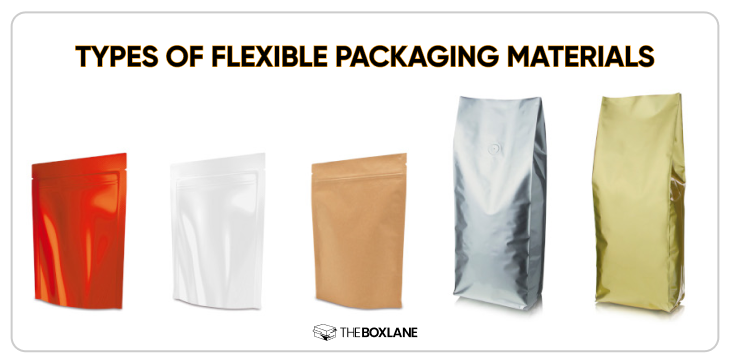
Flexible packaging materials can be in various forms; each has its specific characteristics that suit the product. Let’s take a closer look at the most commonly used materials:
Plastic Films
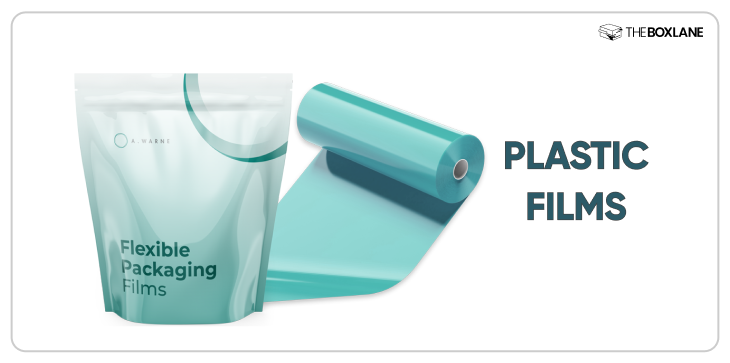
The most widespread variety of flexible packaging, plastic films can be found in snack bags and food packaging materials. They are highly durable and less expensive and they provide good barrier properties, which can shield products from moisture, air and light.
Aluminum Foils
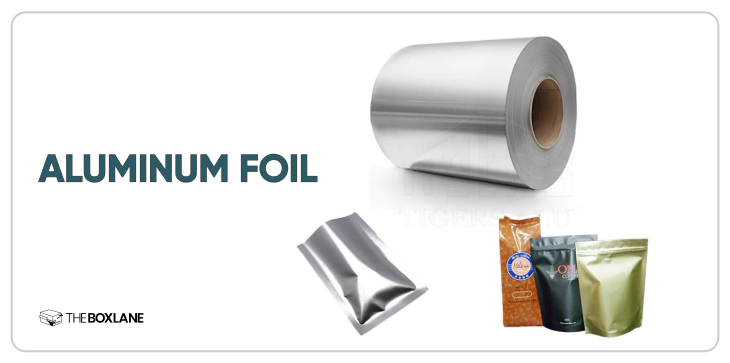
Aluminum foil is normally applied in packing of products that need special protection such as snacks, chocolates, and pharmaceutical products. It provides total protection against light, air and moisture thus suitable for products that require longer shelf life.
Paper-based Materials
Such materials are finding their way into the market due to factors such as their ability to be recycled and being biodegradable. The paper-based flexible packaging can be paper pouches, cartons, and wraps. Besides, it is one of the best environmentally friendly options, particularly if it is used with biodegradable coatings or inks.
Biodegradable Films
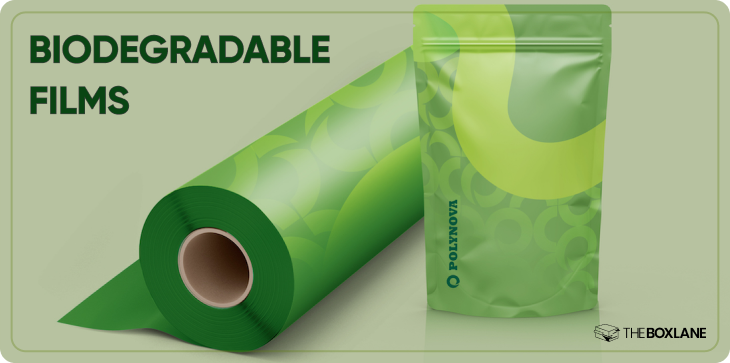
A relatively newer product innovation, biodegradable films are made in a way that they naturally degrade over a certain period of time. These are still materials that are in the fairly nascent stages of development but hold incredible potential for the future of sustainable packaging.
Advantages Over Rigid Packaging
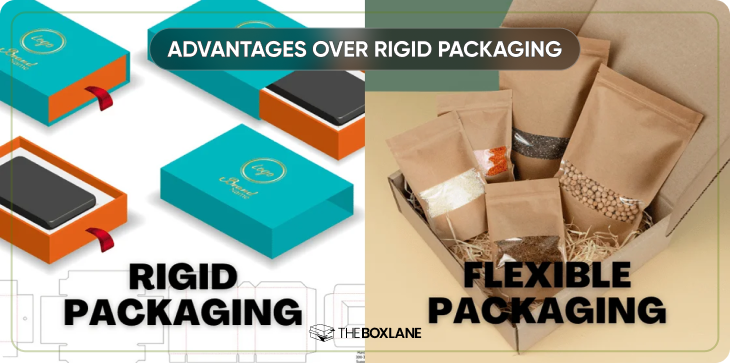
Flexible packaging has certain advantages over rigid packaging which includes glass or plastic bottles, metal cans and cardboard boxes. These advantages play a key role in its growing adoption for sustainable packaging solutions:
Lightweight and Space-efficient
Another advantage of flexible packaging is that it is lighter than most other forms of packaging. The flexible materials consume less energy in the manufacturing process and they occupy little space during transportation. Furthermore it also reduces the total environmental impact through the reduction in the fuel consumed as well as greenhouse emissions during transportation.
Lower Transportation Costs
Since flexible packaging can easily be packed into small sizes and shapes, then it takes less space during transportation. Businesses can ship more products per truckload, which reduces transportation costs and associated emissions.
Reduced Greenhouse Gas Emissions
Because flexible packaging is lighter and more efficient to produce, it reduces the carbon footprint of packaging. Flexible packaging typically requires fewer raw materials, which reduces the energy needed in manufacturing. This helps to reduce emission of greenhouse gases and also a key in fighting climate change or global warming.
Flexible Packaging and the Circular Economy
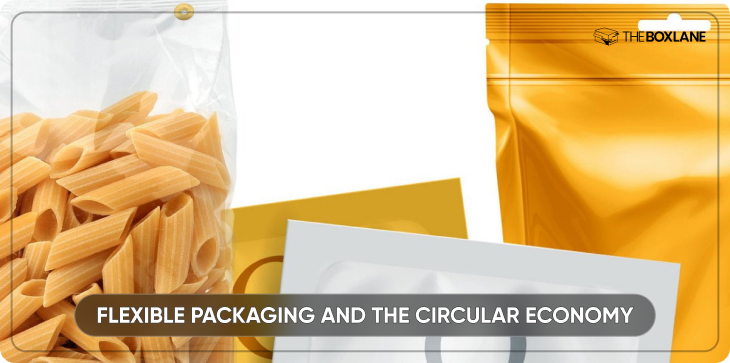
One of the key ideas connected with sustainability is the circular economy. This is a novel economic model with the capability of converting waste and utilizing available materials, for reuse, recycling and /or upcycling. The objective is to have safe circular use of products such as packaging, to be used in a manner which shall reduce their impact to the environment and provide an additional life cycle for the product.
What is the Circular Economy?
The circular economy is different from the linear economy which is the creation, use and disposal of products. Circular economy system focuses on using resources as efficiently as possible to the extent that when the product is no longer useful, it will be recycled. Sustainability is only possible through the circular economy.
The Role of Flexible Packaging in the Circular Economy
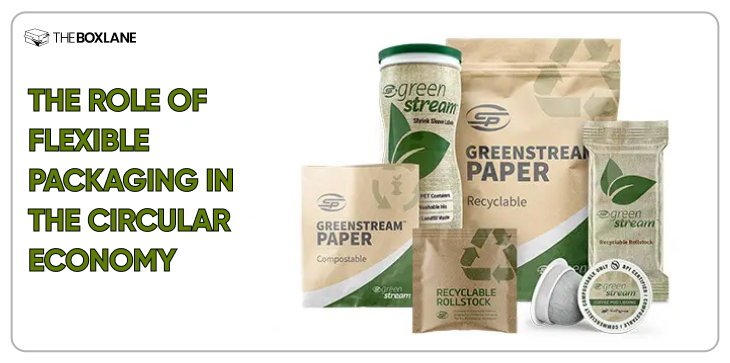
The circular economy is most dependent on flexible packaging, which is a key aspect of the packaging materials. Here’s how it contributes:
Designing for Recyclability and Reuse: Companies are starting to pay attention to developing packaging that is easy to recycle or reuse as much as possible. This includes adoption of single material packaging as it is relatively easier to disentangle and recycle. Some of the packaging is also now being made reusable or refillable so as to help reduce waste.
Utilizing Recyclable Materials: Today, most of the flexible packaging materials can be manufactured from recycled materials like recycled plastics and aluminum. It also helps in the loop by making sure that the packaging material can be reused instead of being dumped in the garbage dumps. When companies use recyclable material, they cut the demand for raw material even in production to reduce the effect on the environment.
This is especially important for flexible packaging where recyclable materials have to be used to establish a closed-loop system. Besides a reduced amount of waste generated, it contributes strictly to resource conservation, which is typical for the circular economy.
Market Trends in Sustainable Packaging
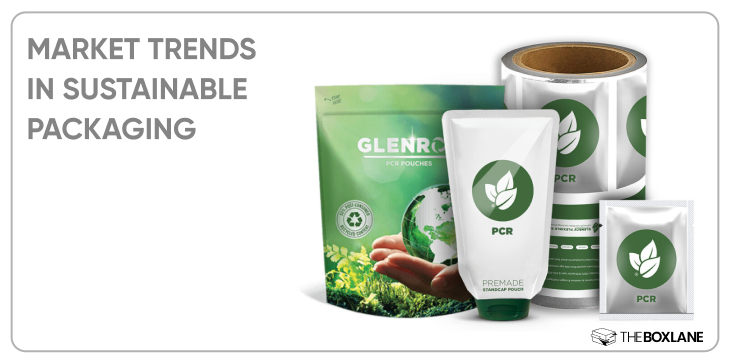
Flexible packaging is one of the most significant pioneers in the shift towards sustainable packaging which is on the rise. Consumers are increasingly calling for sustainable packaging, and companies are answering the call by using sustainable packaging methods.
The expansion of the Sustainable Packaging Market
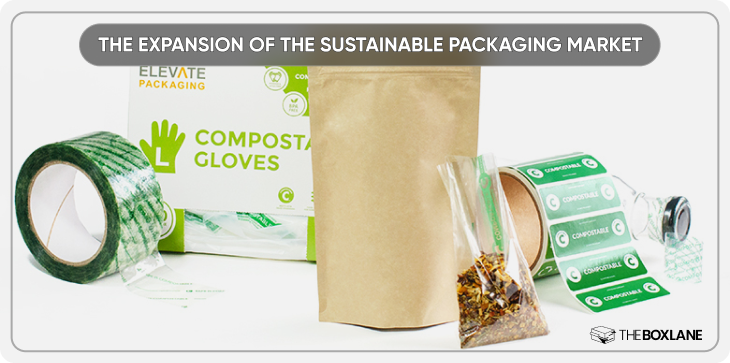
The global sustainable packaging market size was estimated to be USD 271.86 billion in 2023 and projected to grow at a CAGR of 2.9% from 2023 to 2028. Such growth calls for the need to ensure that sustainability is a factor of consideration when packaging products in various sectors.
Drivers for change towards sustainable packaging are; Increasing legislation over packaging waste, Developing consumer consciousness with environmental impacts, Technological breakthrough of adopting sustainable packaging.
Consumer Pull for Green Products
A survey by Meyers reveals that half of the consumers today have sustainability as a very important factor when making purchases. This is because society is gradually changing its attitude towards the purchase of products that will take care of the natural environment. People are becoming more conscious of the damage done by products and their packaging to the environment and therefore companies are changing to fit these changing needs.
With the increasing consumer awareness, flexible packaging offers businesses a solution that can fulfil the need for sustainable packaging.
Flexible Packaging and its Effect on the Environment
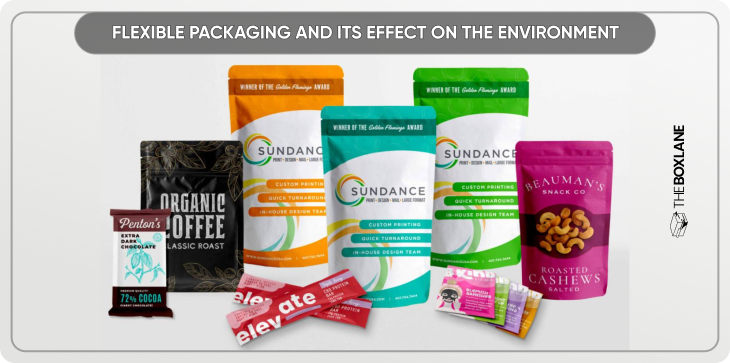
From the above analysis it is evident that flexible packaging plays a great role in minimizing the effects of packaging on the environment. It covers important areas like the carbon footprint and waste management and therefore forms part of a good solution to the use of sustainable packaging.
Carbon Footprint Reduction
Flexible packaging has the capability of cutting back the carbon footprint of packaging by as much as 40% in areas such as the EU (Flexpack Europe). This is done by lowering the amount of material used in the production process, using less energy in manufacturing and improving on the transportation process.
Waste Reduction
Flexible packaging is relatively lighter as compared to other types of packaging, and therefore a small amount of material is used in its manufacturing. Therefore, flexible packaging produces less waste as compared to the rigid packaging commonly used in many industries; hence reducing the amount of waste that is dumped in the landfills. This is a very important step towards solving the waste problem that is rocking the world today.
Development of Sustainable Flexible Packaging
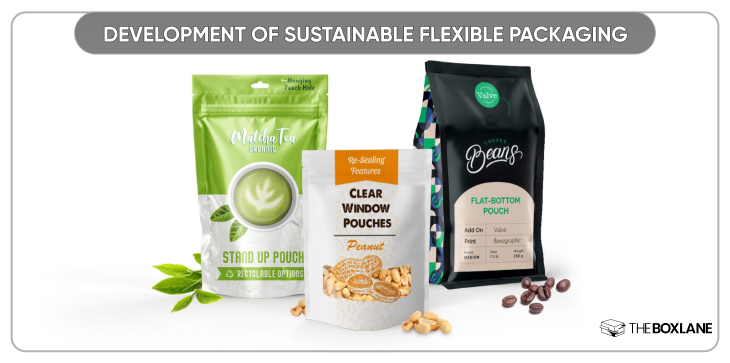
The developments in flexible packaging are gradually increasing, and there are many promising changes designed to make packaging even more environmentally friendly.
Design for Recycling
As companies go deeper into sustainability measures, there are more and more packaging designs whose recycling process is easier. This includes the use of single material packaging and avoiding multi material that may be difficult to recycle. Recycling technology is also improving which has made it easier for the flexible packaging to be recycled as well.
Use of Recycled Materials
Today, there is a trend to use recycled material in flexible packaging manufactured by flexible packaging companies. Through recycling of plastics, papers or metals, the businesses help the market to decrease the use of virgin materials. This in turn relieves pressure on the natural resource base and helps to develop the recycling sub-sector.
Biodegradable Options
With consumers increasingly seeking greener packaging materials, the film and packaging material sectors are looking at biodegradable films and material. These options are quite easy to divide over time and create less long lasting effects on the environment and minimize the use of plastics. If not yet ready for prime time, biodegradable flexible packaging is a hopeful future solution to plastic waste.
Challenges and Considerations
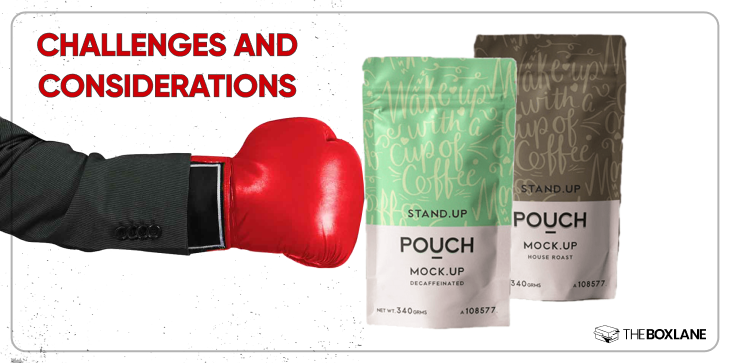
Flexible packaging has its advantages but there are also a few drawbacks when it comes to its complete sustainability.
Infrastructure Limitations
The concern that has been seriously holding back the growth of flexible packaging is the problem of recycling. The issue is that not all regions are equipped with appropriate systems that should be used to manage flexible packaging materials. The current global trends towards sustainable packaging require better recycling infrastructure that can accommodate the flexibility of these materials.
Consumer Education
Flexible packaging has benefits that can improve the sustainability of products, but the consumer should be informed. The survey reveals that a lot of consumers are still confused about how to handle flexible packaging when it comes to disposal and recycling. Thus, packaging companies and businesses need to spend resources in making the public aware on how to recycle the flexible material in order to reduce packaging wastes.
Future Outlook for Sustainable Packaging
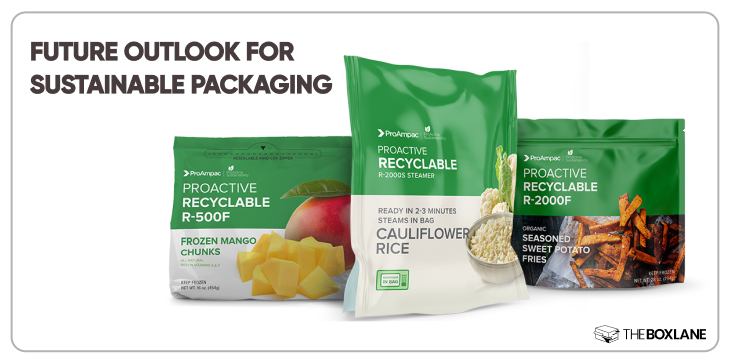
Flexible packaging will continue to be a leading indicator for sustainable packaging because the future for sustainable packaging is promising.
Market Projections
The packaging industry with emphasis on sustainable packaging is projected to have a CAGR of 7.6% between 2024 and 2030 (Grand View Research). Since sustainability has become a significant concern for more and more businesses, and consumers’ awareness rises, flexible packaging will remain a crucial factor for companies to sustain their goals.
Industry Commitment
More organisations are now coming up with sustainable packaging strategies and policies by signing pledges to cut down on plastics and embrace sustainability. Thus, flexible packaging is likely to remain an essential factor that can contribute to the achievement of various industries' environmental objectives as the industry develops further.
Conclusion
This blog shows that flexible packaging is a vital element towards achieving sustainability within the packaging sector. With less waste, carbon emissions, energy usage, flexible packaging is in line with the sustainable and circular economy progression. In today’s world, consumers are becoming more conscious about the environment, so whether it is a small business or a large company they should consider the use of flexible packaging.
Call to Action
Using flexible packaging is beneficial for organizations that have an intention to make their business more sustainable. Such a decision reduces negative effects on the environment, gains clients who are concerned about the environment, and foster circular economy principles. The Box Lane provides a variety of options for flexible packaging to assist companies in moving closer to being environmentally friendly. It is high time to do it – become our partner and join The Box Lane to become pioneers of a sustainable future.


